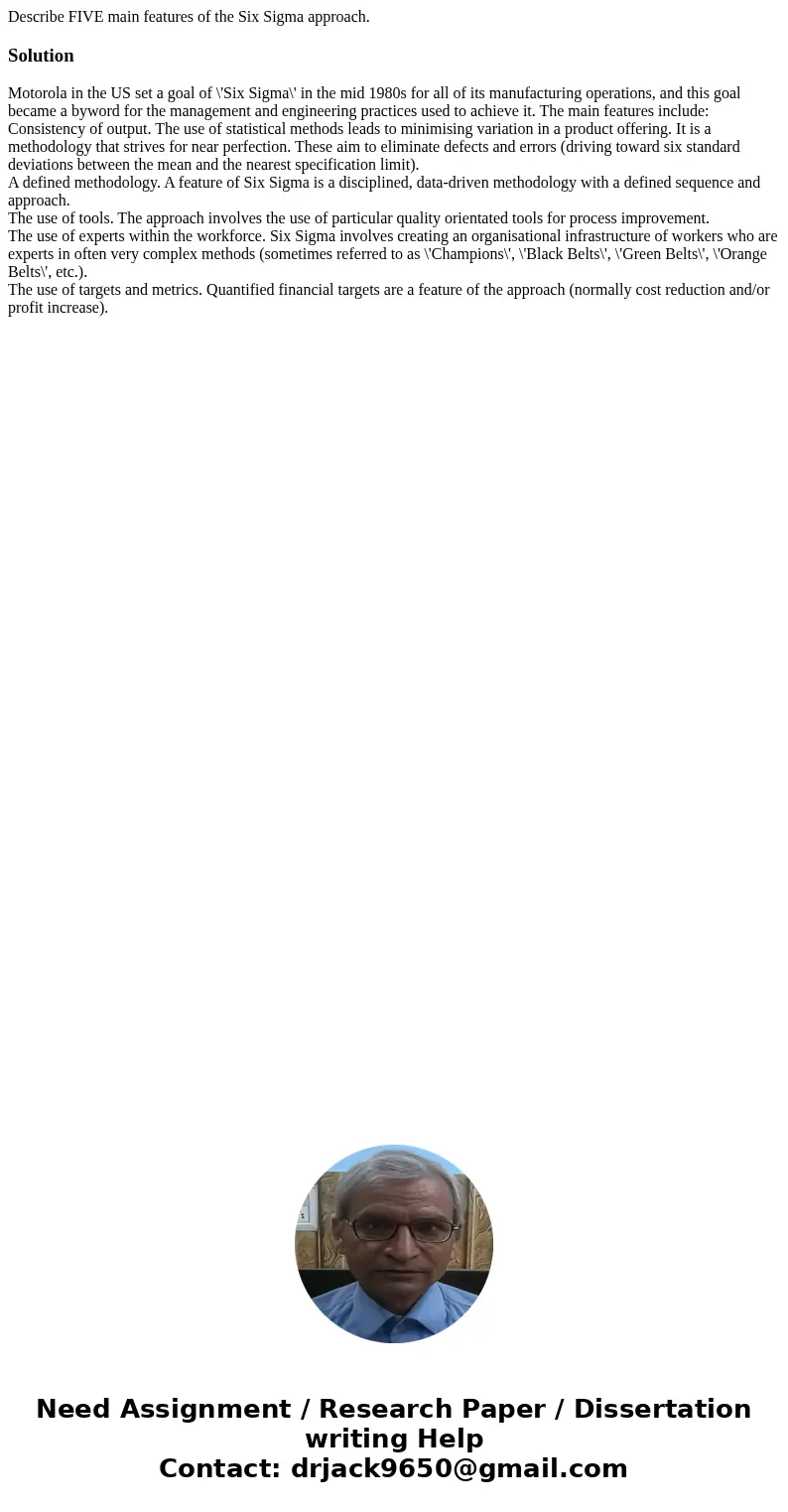Describe FIVE main features of the Six Sigma approachSolutio
Describe FIVE main features of the Six Sigma approach.
Solution
Motorola in the US set a goal of \'Six Sigma\' in the mid 1980s for all of its manufacturing operations, and this goal became a byword for the management and engineering practices used to achieve it. The main features include:
Consistency of output. The use of statistical methods leads to minimising variation in a product offering. It is a methodology that strives for near perfection. These aim to eliminate defects and errors (driving toward six standard deviations between the mean and the nearest specification limit).
A defined methodology. A feature of Six Sigma is a disciplined, data-driven methodology with a defined sequence and approach.
The use of tools. The approach involves the use of particular quality orientated tools for process improvement.
The use of experts within the workforce. Six Sigma involves creating an organisational infrastructure of workers who are experts in often very complex methods (sometimes referred to as \'Champions\', \'Black Belts\', \'Green Belts\', \'Orange Belts\', etc.).
The use of targets and metrics. Quantified financial targets are a feature of the approach (normally cost reduction and/or profit increase).

 Homework Sourse
Homework Sourse